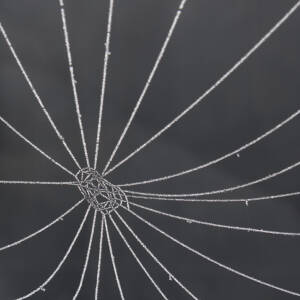New buildings and old
As part of Oxford’s Open Doors weekend I went this morning to hear about the redevelopment of the Radcliffe Observatory Quarter and visit the ten-acre site. Some quirks of history have provided the very unusual opportunity to design so much space so close to a city centre all at once.
When Dr John Radcliffe died in 1714 he left a massive bequest to the university in thanks for the Oxford education which had enabled him to become enormously wealthy as a doctor to London’s privileged. After the library that he’d requested had been built (the Radcliffe Camera) the money left was used to build the Radcliffe Observatory and the Radcliffe Infirmary, both very elegant structures, on land about half a mile from the main centre of the university. The Infirmary was Oxfordshire’s hospital from 1770 when it opened, and in 1948 it was taken over by the new NHS – after which a great sprawl of hospital outbuildings was spattered over the site. Ten years ago the NHS, by now developing hospitals where there was more space in Headington – sold the whole site back to the university. The Infirmary (which I was lucky enough to see from the inside when I had an eye operation 13 years ago) is now a lavish humanities building. Just behind it is the new Mathematical Institute – a fabulous showpiece for a wealthy university. The pale hardwood staircases, steps edged in darker wood, are all faced with hardwood louvres. This mass of vertical lines reflects at various angles in glass mathematical solids, there to spill light from the upper to the lower floors. In the glass common room are tables made of whiteboard, so that mathematicians can demonstrate their ideas as they share coffee with colleagues. In front of the building is a patio of granite and steel in more intriguing mathematical forms.
Our speaker spoke with some discomfort about the design of the health centre for the city that they had had to build on the site. Because it is to be leased back to the NHS it had to be affordable, so it ‘cannot’ match the standards the university has for itself. Which says it all about our sad NHS and this immensely privileged bit of higher education.
I will revisit the site and post pictures from there on other days because I daren’t hope to repeat the light for this picture, taken near the Research Chemistry building which I visited this afternoon. I had no idea that a chemistry postgrad could make his subject so screamingly boring. He knew nothing about the buildings nor the people who work or had worked in them, and misread to us from notes. The chemistry he didn’t know about, which seemed to be most of it, works, apparently, by magic. What he did know about dissolved into an incomprehensible mumble. I probably won’t endure visiting there again so my pictures of 1940s labs, the octagonal roof of the Abbot’s Kitchen and a vending machine that dispenses chloroform, rubber gloves, tubing and phials are lost to you. Sorry.
But you can have the notice that I saw on a cupboard containing inexplicable electrical things:
Do not re-energise engineers working on electrical system
Feel free to add full stops. Or smile.

Comments
Sign in or get an account to comment.


